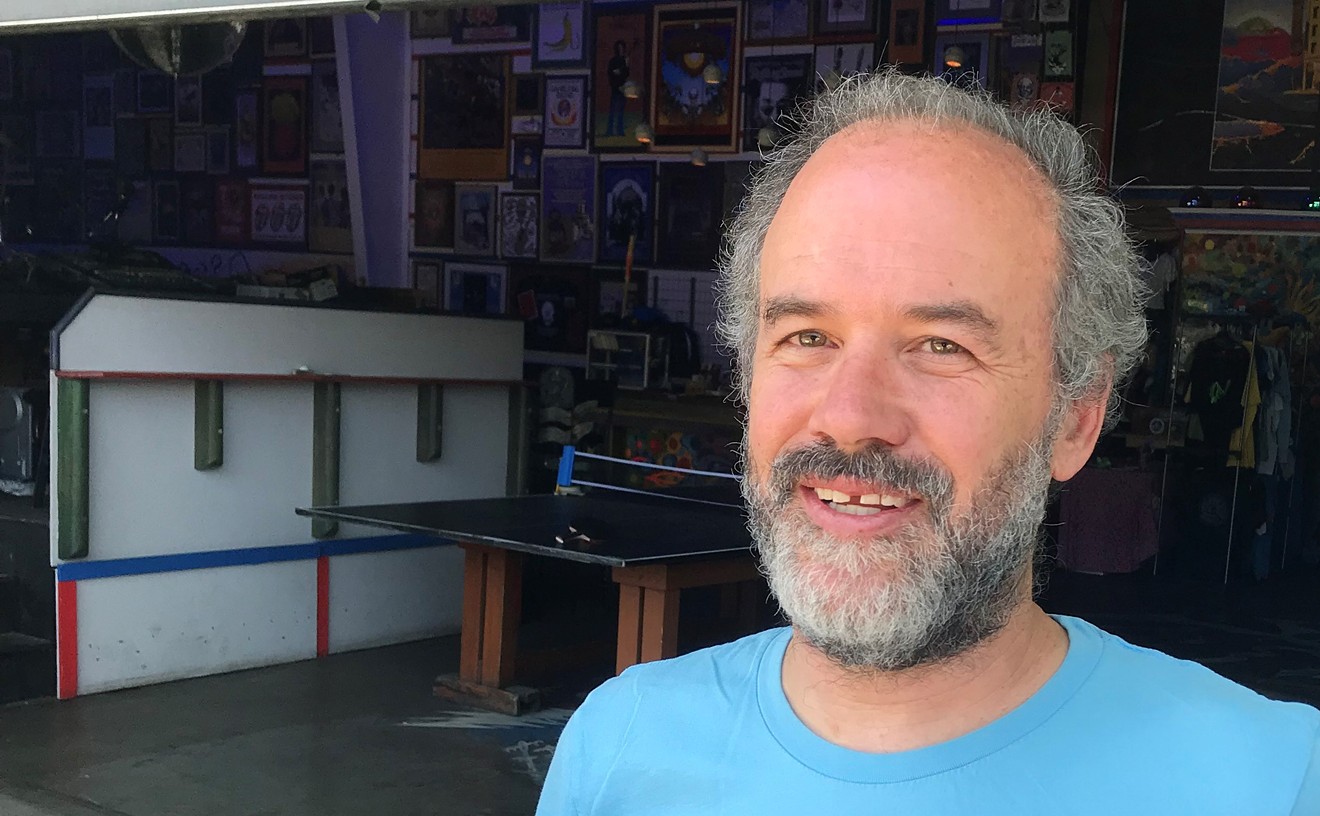From the get-go, the baffling 1996 murder of six-year-old JonBenét Ramsey seemed tailor-made for tabloid exploitation. It had all the right elements: a child beauty queen, brutally murdered in her upscale Boulder home on Christmas night; a histrionic stage mother and rich father, who promptly went on national television to proclaim their innocence; a suspect list that included Santa Claus.
Long before the term "fake news" found widespread currency, the Ramsey case was full of it: leaks designed to feed pro-Ramsey or anti-Ramsey spin, bogus confessions, exonerations and DNA evidence that meant a lot less than they appeared to, would-be indictments that were buried for more than a decade. But along with all the wild theories and dead ends, the case generated some genuine journalism and insights on our media-obsessed culture. Here are some of the most notable stories that Westword has run over the years dealing with Colorado's most infamous unsolved homicide.
1998: The Mom Squad. The Ramsey case coincided with the rise of an Internet subculture of amateur sleuths, compulsive archivists and true-crime chatterers, a phenomenon that Chris LaMorte explored in fascinating detail in this prescient account of Mrs. Brady's URLs, one of the pioneering websites devoted to all things JonBenét.
2000: Justice, Boulder Style. Steve Thomas, the lead investigator on the Ramsey case, abruptly resigned from the Boulder police force and wrote a book blasting John and Patsy Ramsey and District Attorney Alex Hunter — a book that triggered a lawsuit by the Ramseys. Juliet Wittman's profile of Thomas is must-read for anyone trying to understand how the police and prosecutors ended up at cross-purposes by the time the matter was turned over to a grand jury.
2006: Made for Each Other. The failure of the grand jury to issue an indictment in JonBenét's murder led many to conclude that the killer must have been an intruder, unknown to the family. That, in turn, led to several off-the-wall documentaries co-produced by University of Colorado journalism professor Michael Tracey, pointing the finger at various less-than-prime suspects. Eventually, Tracey played a critical role in reeling in John Mark Karr, a creepy false confessor who fit Tracey's notions of the kind of person who could have snuck into the Ramsey home and committed homicide on Christmas night. But the arrest of Karr soon turned into a fiasco, as police determined he wasn't in Colorado at the time and didn't match the mystery DNA found at the crime scene. And Tracey's own role in shaping Karr's confession, in the course of many e-mails and phone calls before his arrest, brought into tight focus the dangers of amateur detectives pursuing their own agendas in the case.
2008: DA Lacy Clears Ramseys; Skeptics Remain Skeptical.
Unabashed by the criticism of her office over the Karr Wreck, District Attorney Mary Lacy astonished many observers by issuing a remarkable letter of apology to the Ramsey family — in Patsy's case, a posthumous one. Declaring that the unknown male DNA found in the victim's underwear must belong to the killer, Lacy exonerated the parents shortly before leaving office. But her reasoning — given all the other unexplained DNA traces at the crime scene, much of which was likely from contamination or had other "innocent" explanations — raised more questions than ever.
2013: How an Indictment Became an Exoneration. Fourteen years after DA Hunter announced that no charges would be filed in the Ramsey case, Daily Camera stalwart Charlie Brennan reports that the grand jury had prepared indictments for John and Patsy Ramsey on child-abuse and accessory charges — but Hunter declined to sign them. The release of four pages of "true bills" by a Boulder judge prompts new scrutiny of the actions of Hunter and his successor, Lacy the Exonerator.
2014: The Coldest Case. After nearly two decades of declining press overtures, Fleet and Priscilla White give their first in-depth interviews to Westword regarding their once-close relationships with the Ramseys and how it all fell apart after JonBenét's death. "What happens is that evil comes in," Fleet told me. "If you don't have truth, all you have are lies, then what comes in is evil. And evil just does its thing. In the Ramsey case, it just did its thing, and it's eaten up so many people."
2016: More DNA Trouble. The twentieth anniversary of the murder becomes an occasion for a barrage of less-than-special TV specials, an excuse to offer a lot of archival footage and little new information. Burke Ramsey's appearance on Dr. Phil proves to be weird but unilluminating, while a CBS docuseries that theorizes Burke may have had some involvement in his sister's death leads to more promised litigation by Ramsey attorney Lin Wood, who shares his outrage with Westword's Michael Roberts. The big news in the case, though, comes from local journalists Brennan and Kevin Vaughan, who obtain outside lab reports and conclude that Lacy misrepresented the DNA evidence that she used to "clear" the Ramseys in 2008 — that the "unknown male" profile developed years ago is actually a composite of several sources. The revelation sets the stage for yet another round of DNA testing and an investigation that remains not only open, but riddled with gaping holes and half-buried secrets.
Twenty years after JonBenét was murdered on December 26, 1996, the case remains unsolved.
[
{
"name": "Air - MediumRectangle - Inline Content - Mobile Display Size",
"component": "12017618",
"insertPoint": "2",
"requiredCountToDisplay": "2"
},{
"name": "Editor Picks",
"component": "17242653",
"insertPoint": "4",
"requiredCountToDisplay": "1"
},{
"name": "Inline Links",
"component": "18838239",
"insertPoint": "8th",
"startingPoint": 8,
"requiredCountToDisplay": "7",
"maxInsertions": 25
},{
"name": "Air - MediumRectangle - Combo - Inline Content",
"component": "17261320",
"insertPoint": "8th",
"startingPoint": 8,
"requiredCountToDisplay": "7",
"maxInsertions": 25
},{
"name": "Inline Links",
"component": "18838239",
"insertPoint": "8th",
"startingPoint": 12,
"requiredCountToDisplay": "11",
"maxInsertions": 25
},{
"name": "Air - Leaderboard Tower - Combo - Inline Content",
"component": "17261321",
"insertPoint": "8th",
"startingPoint": 12,
"requiredCountToDisplay": "11",
"maxInsertions": 25
}
]











